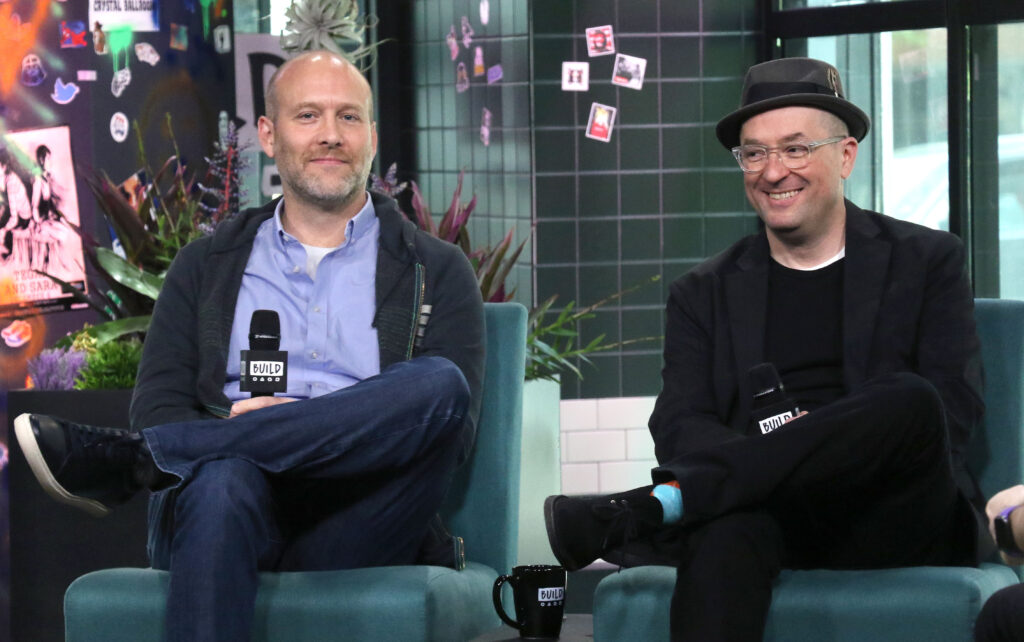
If I say to you the names Christopher Markus and Stephen McFeely, I’m guessing a little over 25% of you know who those two are. If I say those two names on anything other than a screenwriting site, that number drops to .001%.
And yet, those two are the writers of, at one point, the highest grossing movie of all time, Avengers: Endgame.
I want you to think about that for a second. The writers of the most successful movie ever made are so obscure that the overwhelming majority of the people on this planet – people who have seen the movie mind you – have never heard of them.
And yet, if I say the names Quentin Tarantino, Aaron Sorkin, Diablo Cody, and Taylor Sheridan, peoples’ ears perk up. They know those names. Those are respected screenwriters.
This got me thinking about the differences between pursuing a studio career versus pursuing an artist’s career.
In one, you become a cog in the machine, moving from high-profile assignment to high-profile assignment. However, you are a very generously paid cog. And if you can make it to the top of the studio mountain, like McFeely and Markus, or Shay Hatten (John Wick sequels), you are drowning in cash money. Even if no one knows your name.
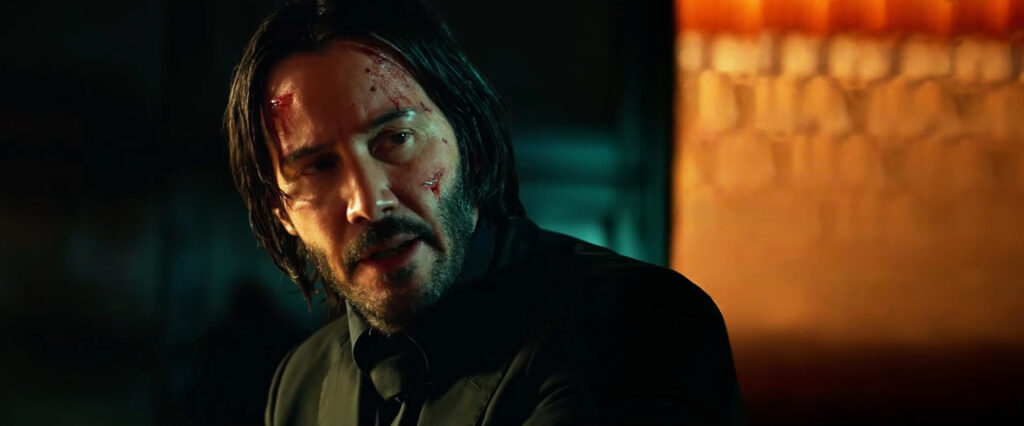
In the other, you are writing for the love of it, and are getting recognized as a respected name in the business. If you can crawl to the top of this pile, you are fighting for Academy awards. And the public may even know your name.
But while you might never be a cog, you will spend a lot more time fighting to get your projects made due to the fact that they’re not obvious money-makers. So while you gain prestige and respect within the industry, you lose financial security.
I think it’s important for amateur writers to figure out which direction they want to go in because each path requires a different strategy. And I want to discuss those strategies today.
If you want to become a studio screenwriter, you need to become obsessed with high-concept. That’s going to be your ticket to ride. Back in the day, you operated on a 1-step process whereby you wrote a high concept script to sell it.
These days, they’ve added a step. You write these scripts to get recognized as somebody who’s good at writing this kind of script. A manager or agent takes you on based on the strength of that spec. They send your script around town to the big-budget production houses and studios, and hopefully, one of those places hires you to write *their* big-budget script.
This is exactly what happened to Michael Waldron. He wrote a script called The Worst Guy Of All Time, and the Girl Who Came To Kill Him, which had time-travel, comedy, and acton set-pieces. That script eventually got to Kevin Feige and Feige loved it. Which led to Waldron getting hired to write Loki, and now the next big Avengers movie, Secret Wars.
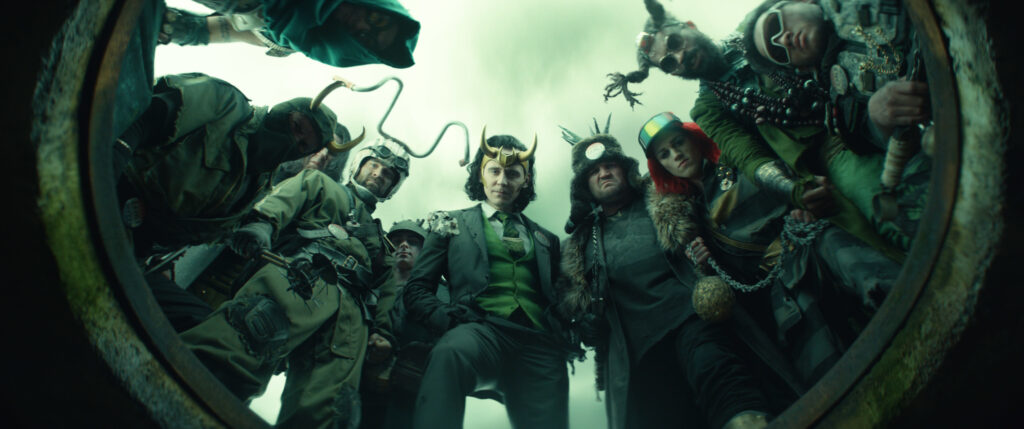
Another thing studio writers must have is a mastery of structure. You have to know the three-act structure like the back of your hand. You have to understand page counts and on which pages key plot beats happen. You need to know terms like the “inciting incident” and the “Mid-Point Twist” or “Mid-Point Escalation.”
You need to know these things because studios are way more technical in how they approach things. They don’t leave anything up to wish-washinesss or “feel.” They need to be able to say to you, “the first half of your second act is 10 pages too long. Cut 10 pages out.” And you have to know what that means.
They’re going to use words like “pacing.” They’re going to say, “The pacing in your third act sucks.” And you need to know what that means and how to fix it (it basically means that your third act scenes are dragging or you’ve got some extra scenes in there that aren’t needed).
Studios don’t have time to teach screenwriters. They’re expecting you to already know the technical details like the back of your hand. I learned this the hard way. I recommended a couple of screenwriters who weren’t ready for the intensity of a studio assignment yet, and received a couple of frustrated phone calls from the producers regarding the writers’ abilities.
These writers had previously written strong scripts. But they were scripts where they didn’t have to answer to anyone. The studio system is a collaborative system. You need to be able to work with others. You need to be able to receive notes and understand what they mean.
Which is I why I remind writers if they’ve written ten scripts and still haven’t “made it” yet, that doesn’t mean they should give up. All the learning they’ve gone through writing those scripts has made them great candidates to become studio screenwriters. Cause they’re familiar with a lot of the speed bumps associated with screenwriting and know how to tackle those bumps.
Meanwhile, if you want to become a respected screenwriter, aka an “artist,” high concept isn’t nearly as important. In fact, it might take away from the other aspects of your writing that you’re trying to showcase. You should still be seeking out a clever concept – something ironic maybe (Good Will Hunting – a Harvard janitor solves a math equation that nobody at Harvard could solve). But it doesn’t have to be a big flashy idea with a lot of kung-fu or time traveling going on.
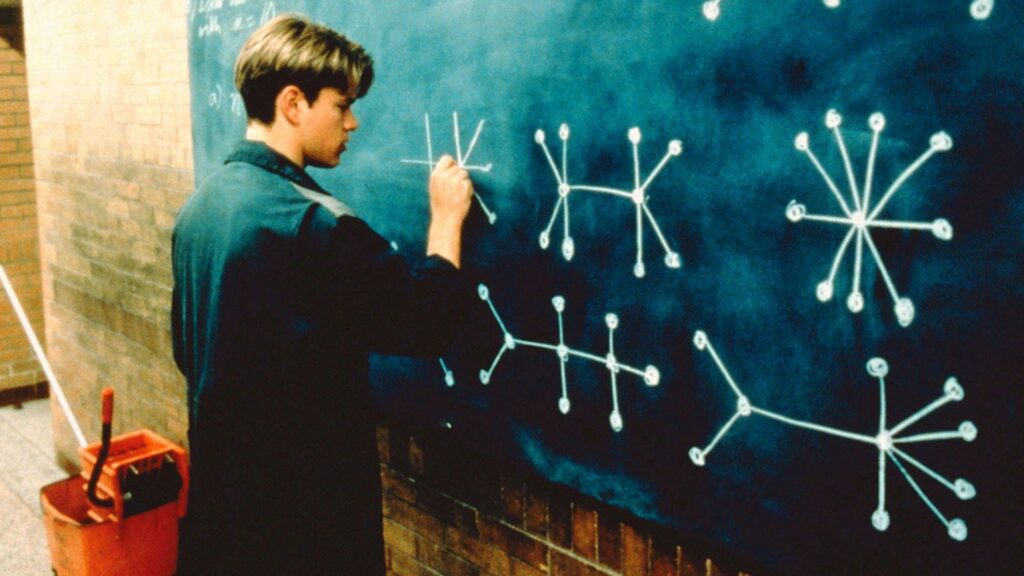
What you *do* have to be great at is character development. If you don’t enjoy delving into the depths of people and what makes them tick, the “artist” route is not the route for you. It’s better to pursue the studio side. Cause studio screenwriters only have to know how to make their characters likable. They don’t have to write Oscar-worthy character journeys.
Character development boils down to creating imperfect characters who we still root for. Arthur Fleck from Joker is a good example. Or Louis Bloom from Nightcrawler. Or Cassandra from Promising Young Woman.
You need to know how to give these characters flaws (Cassandra could not see through her rage and let it dictate all her actions). You need to know how to explore those flaws. You need to know how to have your characters overcome those flaws at the end. Or fall victim to them if that’s the kind of movie you’re writing (like Cassandra). And you need to know how to do this with character relationships as well. You need to know how to start a relationship in one place (broken) and end it on the other end of the spectrum (fixed).
And you need to know how to make characters interesting. Not boring. The most respected screenwriters are the ones who can create classic characters. These screenwriters are obsessed with people and want to dig into them and know how they tick. That intense curiosity is what leads them to write these iconic characters.
You also need be great in one of two other areas. You need to be saying something important thematically with your script. Or you need to have a unique voice. These days, social issues are the easiest ways to explore a theme so they’re the perfect option if you want to go in the thematic direction.
If you’ve never been good with theme or you don’t have any interest in writing a script about 12 Native Americans who go to the moon, you need a flashy strong voice on the page. Taika Waititi. Emerald Fennell. Christy Hall. A voice that explodes and forces the reader to take notice.
Naturally, artists will be shooting at a different target. Instead of blanketing the town with a sexy action premise and hoping to get a meeting at 87North, you’ll be trying to make the Black List. If you can make the Black List, that’s going to give you the first bump you need towards becoming that “respected” screenwriter. It’s also going to put you in a great position to get your movie made.
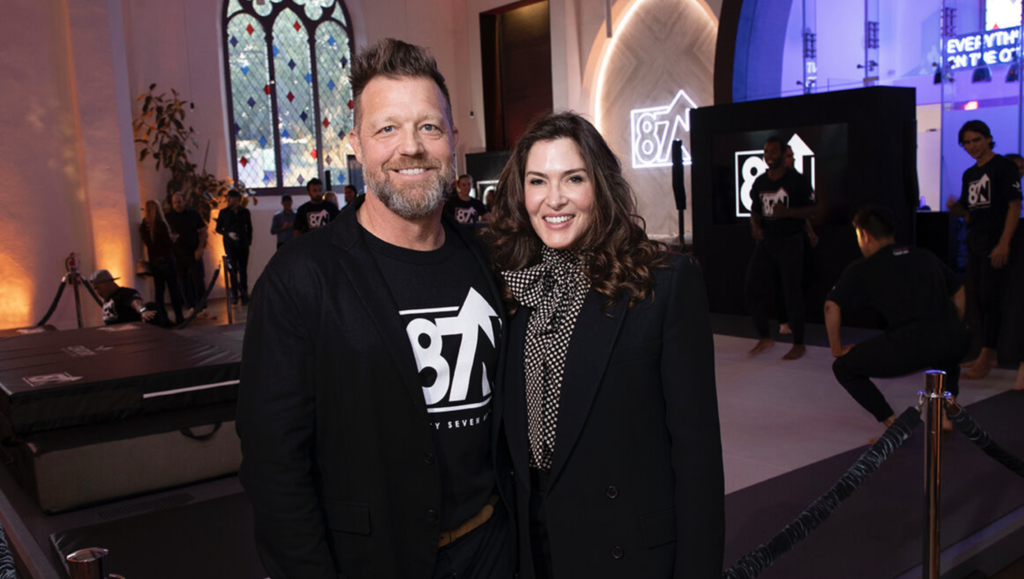
I forgot what our last tally was, but I think it’s between 25-30% of Black List scripts get turned into movies. Which is great. Because one of the crappy things about being an artist is that it’s harder to get movies made since your script won’t have the same marketability as a high level, or even a low-level, studio release. So using the buzz of a Black List showing to get your script made is a legit strategy.
But the reality is that, as an artist, you’re going to have to do a lot more work than the studio writer types to break in because it’s always going to be harder to break in with unmarketable material. It’s just harder to get people to read things that don’t have a sexy premise. They’re always the last scripts I read and I think most people in town feel the same.
So as long as you know the journey will be longer and harder, you can accept the challenge and not get discouraged so easily.
Of course, there’s a third option – which is the TV option. But we’re out of time. Maybe that’s an article for a future date. Let me know if that interests you. In the meantime, figure out which kind of writer you are and start strategizing your career immediately!
Get A Screenplay Consultation with Carson! – Do you want me to look at your script? Tell you how it stacks up to the other 10,000 scripts I’ve read? How it stacks up to all the scripts being sent around town? Is it up to par with those scripts? Is it better than those scripts? Is it not as good? If so, what’s wrong? How can you fix it? This is my area of expertise so if you’ve been thinking about getting a consultation, now is the time to do it! I can give you $50 off if you mention this article. E-mail me at carsonreeves1@gmail.com to get started!
Genre: Sports Drama/Comedy
Premise: Mickey Bradley, a wildly talented minor league baseball player in his early twenties who returns home to Los Angeles after an injury and coaches a little league team full of misfits who remind him why he fell in love with baseball in the first place. And there’s a sweet romance in there too.
About: This script comes out of 2020’s Black List. The writer, Ethan Dawes, wrote and directed a small indie film in 2013 called Go For Broke. He was also Carrie-Anne Moss’s assistant in The Matrix Resurrections. Random factoid that has nothing to do with today’s script – Moss just signed on to the new Star Wars show, The Acolyte!
Writer: Ethan Dawes
Details: 107 pages
 MBJ for Mickey?
MBJ for Mickey?
There are certain staples in the studio release cycle that will never die. The “Adult Has-Been Forced to Coach A Kid’s Sports Team” flick is one of those. The reason I bring that up is because, as a screenwriter, you wanna be strategic about what you write. You want to look for the types of scripts that fit into the slots that Hollywood likes making.
I read this old article that Scott posted in the comments yesterday about a struggling screenwriter who surprisingly sold his script, Showtime (that reality TV cop movie starring DeNiro and Murphy), and noticed something interesting within the article.
The script wasn’t the writer’s idea. Someone suggested it to him. He admits he never would’ve written an idea like Showtime otherwise. Afterwards, he tried to sell a script about a 15 year old kid who lived on a floating casino. It didn’t sell. After that, it took him 17 years to get another movie made. And that was another out-there idea – some sort of 70s period piece about Steve McQueen stealing money from a secret fund of Richard Nixon’s.
The only idea that seems to have done anything for this writer was one that someone else came up with. And say what you want about that move – Showtime – but it very much falls into a slot of movies that Hollywood loves to make. Buddy-cop movies. And it was a fairly inventive spin on the genre at the time. So I can see why it got made.
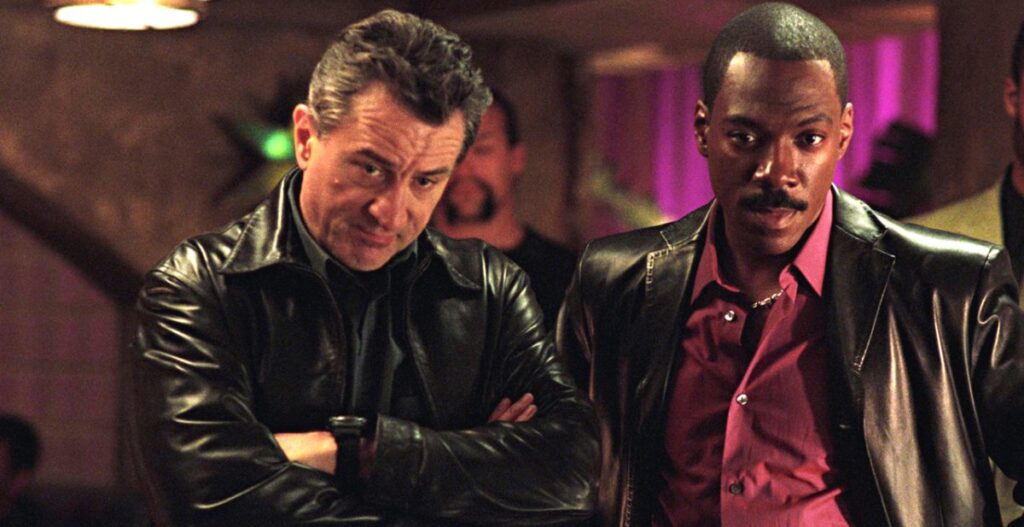
This is a long way of saying that we can get so obsessed by and blinded by our own ideas that we don’t ask the question – does Hollywood actually make the type of movie I’m writing? Cause if they don’t, you’re turning already bad odds into insurmountable odds.
We can make fun of how cliched today’s genre is. But at least this writer is playing to win. Whereas so many aspiring screenwriters are playing to lose.
Mickey is 13 years old pitching to win the Little League World Series when the Japanese team hits a home run off of him to win the game. 15 years later, 28 year old Mickey (hey, didn’t we just cover a Mickey in yesterday’s review??) is pitching in the minor leagues and tears his something-or-other muscle. He’s quickly dropped from the team.
Mickey heads back to the valley in Los Angeles to pick up the pieces and figure out what to do next. After a video goes viral of Mickey throwing a fit in the locker room after getting cut, his agent suggests that he rebuild his image by coaching the same little league team that he played on as a kid. Mickey figures, “why not?” only to learn that the team is now made up of almost entirely girls!
It’s a bit of “A League of Their Own” mixed with “Bad News Bears.” Mickey can’t see himself coaching a bunch of girls but he’s got to rehabilitate that image so he signs on. Naturally, all the girls are terrible (one of them likes singing in the outfield more than catching balls) except for the studly chick who hangs around the park and isn’t on the team… yet!
With a little help from his old catcher, Pickles, and the cute older sister of one of his players, Mickey will have to stop being so serious about the sport and learn how to have fun! If he can figure out that little life hack, he may finally realize that the real wins in life come on the inside, not the outside.
What can I say?
This was a really smart idea to write a script about.
Same old formula. But instead of a boys team, you make it a girls team. I don’t know if it’s possible to tailor something to 2020s Hollywood better than that! Dawes probably reserved his spot on the Black List months beforehand by alerting Franklin Leonard to what he was writing. “Boys bad, girls good!!??” Franklin responded. “You’re in!!”
That had to be how it happened, because if you actually read this script, you saw that nothing else changed. Minus the gender-swap, it’s the exact same Bad News Bears formula.
I don’t know how I feel about that. As someone who critiques screenwriting, I want more. I want originality. I want the writer to push themselves. As someone who closely monitors the business, however, I respect the hustle. The writer knows he doesn’t have to do anything extra here. He gave us the “different” in “the same but different” equation. Why stress yourself beyond that?
As for the writing overall, it was decent but not exceptional.
A reminder to Ethan and all screenwriters out there to be aware of the reader experience. Writers are often so in their heads, they’re not gauging how their writing is being received. If you’re too cavalier about this, you can leave confusing moments on the page. Or moments that cause the reader hiccups. Here’s an example. In this scene, Mickey gets fired from his minor league team…
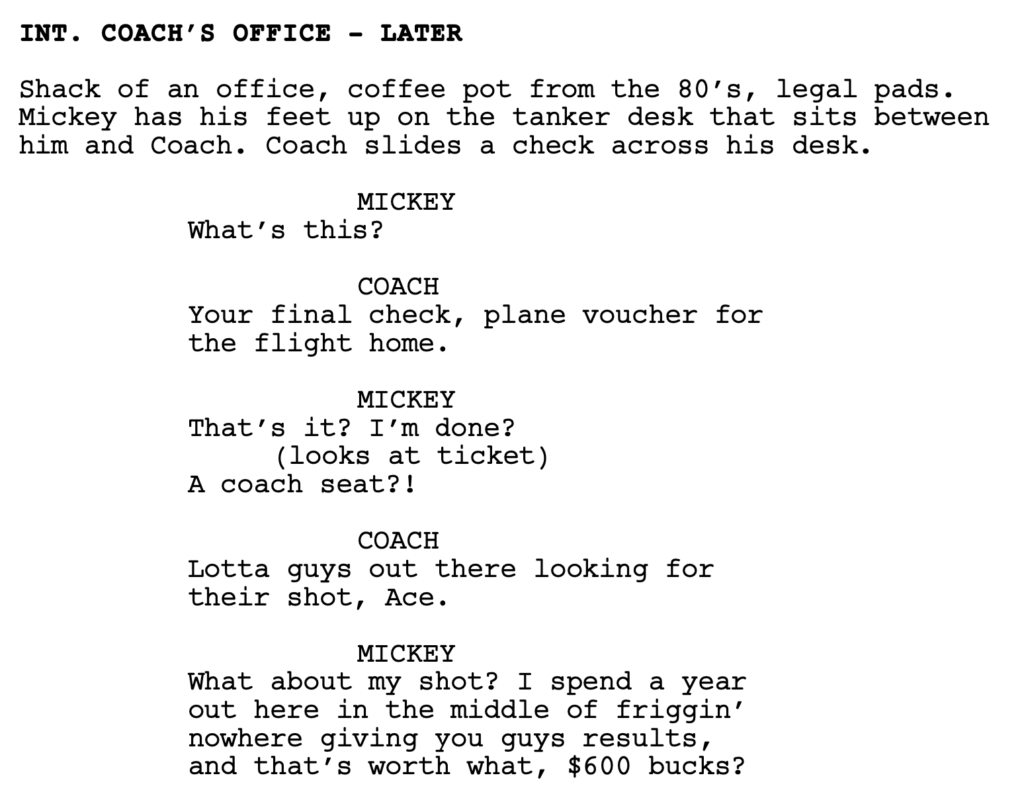
Mickey says, “Im done?” So we know he’s being let go. The next line is, “A coach seat?” The first thing that I thought of, in that moment, was, “Oh, they’re asking him to retire as a player and become a coach.” Because what else would “coach” mean in this context? But then I realize, “Oh… he’s talking about a coach seat on the plane.”
I get it. You want to get the “coach seat” line in there to emphasize how little they value him. But if it’s going to confuse the reader or cause a hiccup, is it worth it? I say it isn’t.
Now it’s true that the parenthetical in there tells us to focus on the ticket, which helps stave off potential confusion. But here’s something that writers may not know: Readers are not reading your script like it’s some classic novel where they’re savoring every syllable like a fine wine. Their eyes are moving down the page fast.
Most readers don’t even read parentheticals. Not because they’re lazy. But because they’ve read so many scripts in the past where writers use parentheticals superfluously. They don’t tell us anything we don’t already know. So we skip them.
Just watch out for that stuff.
To show you that I’m not picking sides here, soon after that scene, Mickey flies back to Los Angeles. The writer uses 3 lines – just 3 lines – to create one of the clearest characters I’ve read all month. Here’s that moment in the script.

By far, the best way to create a strong and clear character is through a strong and clear introduction. Tell me you don’t know exactly who Mickey’s mother is after this scene. Any mom who will show up at the airport for her son, after he’s been let go, and bring a sign with her that highlights how great she thinks he is? That’s the most supportive mom ever. So we immediately know she’s a great mom and that these two have a great relationship. IN JUST 3 LINES!!!
That’s awesome writing!
But let’s be real. This concept, while marketable, is so susceptible to cliche that even when you swap in an entirely different gender, it still feels dated and predictable. Maybe if Mickey had been a more interesting character, it might’ve worked. But he’s pretty generic.
Ted Lasso has really raised the bar for sports comedy. And Here Come The Bandits couldn’t reach that bar if all its players stood on top of each other.
This script didn’t have anything beyond the smart marketing strategy.
[ ] What the hell did I just read?
[x] wasn’t for me
[ ] worth the read
[ ] impressive
[ ] genius
What I learned: Weird ideas (like 15 year olds living on fictional floating gambling islands) should be treated experimentally, not as legitimate attempts to make it in the business. Don’t spend too much time on these scripts. Accept that they will probably only be used as writing samples. If you have that attitude, you’ll be fine. But don’t spend an entire year writing a period piece about Steve McQueen trying to steal money from a secret presidential fund that only exists in your mind. It’s not an efficient way to spend your time as a screenwriter and is only going to lead to frustration. Spend the bulk of your time writing movies THAT HOLLYWOOD ACTUALLY MAKES. Today’s script is an example of one of those movies.
Logline Rewrite: The logline I included at the top of the review comes from the Black List and was likely written by a first-time manager. Here’s what the logline should’ve been — After a devastating injury, a tough traditional-minded baseball player returns home to coach his former little league team, only to find out that it’s become an all-girls squad.
Get a logline consultation for $25. It includes a 1-10 rating, a 150-200 word analysis, and a logline rewrite. Improve your logline from that awful version at the beginning of this review, to the one I just wrote above. E-mail me at carsonreeves1@gmail.com (5-pack of logline consults for $75!)
Oh Mickey you’re so fine, you’re so fine you blow my mind, hey Mickey 7!!
Genre: Sci-Fi
Premise: Set in the future on a mining colony, an “expendable” named Mickey 7 – someone built to die over and over again on dangerous missions, their mind re-uploaded to their cloned successor – is erroneously assumed dead, and comes home to find out they’ve already created his replacement, Mickey 8.
About: I always pay attention to what an actor, at his hottest point, chooses for his next project. Because when you’re at your hottest point, you’re being offered the best roles in Hollywood. So whatever you choose in that moment tells us writers something about what actors are looking for. At Robert Pattinson’s peak of stardom – as he played the Batman, which was in theaters at the time – he announced that this would be his next project. Parasite’s Bong Joon Ho is directing.
Writer: Edward Ashton
Details: 280 pages
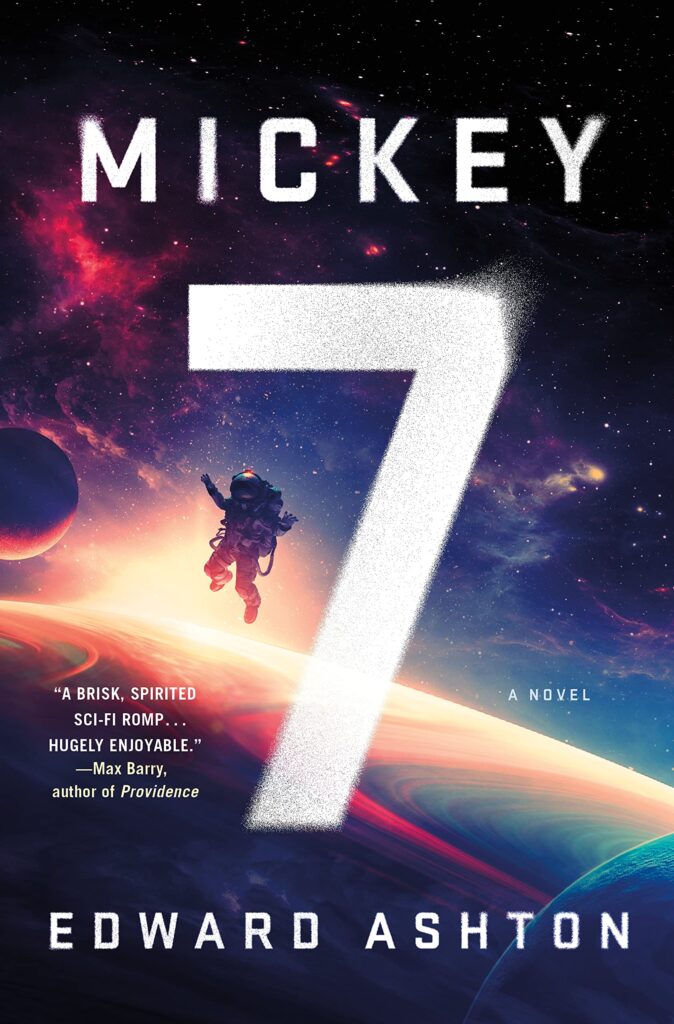
One of the paradoxes present in my life is that I love sci-fi yet dislike so many sci-fi movies I’ve seen lately.
Moonfall, Tenet, The Tomorrow War, Dune, Reminiscence, The Adam Project, Interstellar, Infinite, Life, Blade Runner 2049.
Where the good stuff at?
What I like in a sci-fi script is rich mythology and a good story that moves along at a brisk pace. A good example would be The Martian.
Some of you are probably angry that I’m including “Dune” in movies I don’t like. Dune is the perfect example, for me, of a movie that only gets it half right. It has a rich mythology. But it slogs along at a glacial pace. Then you have something like The Adam Project. That movie moves along at a brisk pace but has some of the weakest mythology this side of Battlefield Earth.
I need both.
Let’s see how today’s novel fares. And whether it will make a stellar movie or not.
Mickey 7 is an “expendable.” He lives in a colony on a planet far away, with about 200 people on it. Mickey has a unique job. He goes out on dangerous missions – usually to suss out whether giant worm-like “creepers” are threatening the base – to die. His deaths give the colony data they can use to stay safer.
As soon as he dies, his backup consciousness is uploaded into a new cloned version of him. So Mickey never truly dies. When we meet Mickey, he’s dropped into a new area and falls through the ice into an underground cavern where a giant worm-like “creeper” sizes him up. Mickey calls base, says he’s about to die, and then waits for the end to come.
But when the worm doesn’t eat him, he finds his way back to the surface and back to base. Except, now, Mickey 8 is in his room. Mickey 7 and Mickey 8 quickly discover that they don’t want to kill each other. So they’re going to try to live together. Which is going to be hard because the base recently instituted a 2000 calorie limit for everyone due to a slow-down in food production. That means each Mickey only gets 1000 calories a day.
In addition to this, our Mickey twins are going to have to fool Mickey’s girlfriend, flight commander Nasha, and Mickey’s best friend, pilot Berto. If they can do that, maybe they can make this “two Mickeys are better than one Mickey” plan work. But when the super angry base commander gets word that something is up, the Mickeys will need to accelerate a plan for figuring out the true purpose of Mickey.
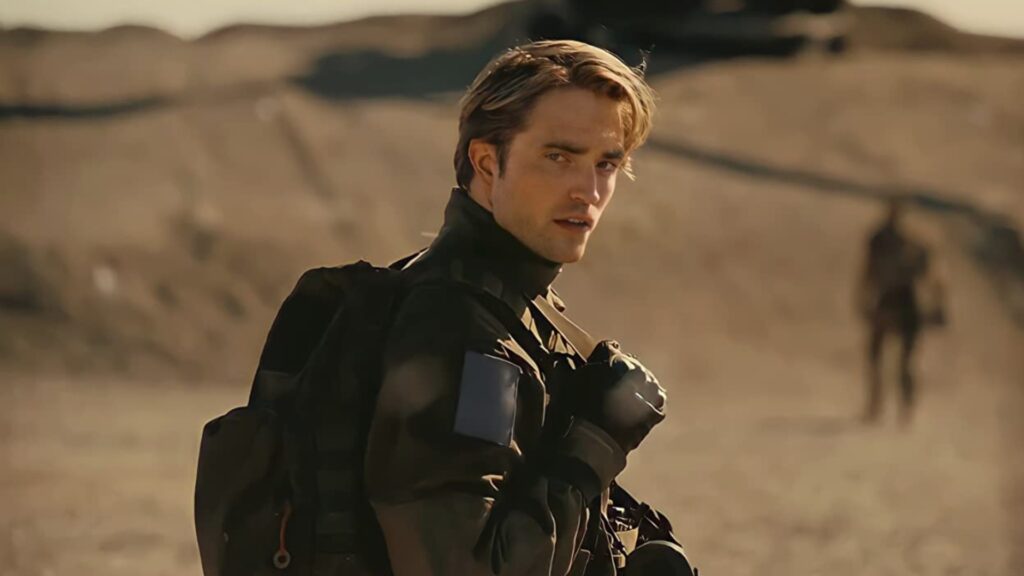
Back in the day, there was this trick literary agents used to use in order to sell scripts. They would send a script off to several buyers at once, let each buyer know that other buyers were reading, which would result in studios quickly reading through the first act to see if they had a movie here, then bidding before they reached the second act, just to beat the competition to the punch.
This is what allowed so many bad scripts to get purchased. When you write a high concept script, the first act is the easiest part. You just introduce your cool concept and you don’t have to prove that it can result in a good movie because the studio doesn’t even get to the second act.
This trend of novels becoming the new spec scripts has a similar con in play. Nobody has time to read anything. Nor does anybody in Hollywood like to read. Agents know this. So they send these books out knowing that nobody is going to read more than 30 pages because doing so would take up 8 hours of their day.
So buyers read the first 30 pages, and if they like the setup, they buy the property. Which has to be how this book got through the system. Because if anybody read the last 200 pages of this, they would not have purchased it. It’s not that it’s bad. But it fails at its primary goal – which is to exploit its concept.
This movie is built around the idea that a guy comes back to find that they’ve already created a new copy of him. Two living copies is illegal. They’re not allowed to exist. That’s our setup. So how does our author explore this dilemma?
One of the copies ends up taking a lot of naps.
No. I’m serious.
This is how the author explores the idea. By ignoring it. He keeps Mickey 8 back in the room so that Mickey 7 can go walk around the base.
The only way this premise works is if we’re scared for Mickey 7. That being discovered would mean instant termination. Yet we’re never once scared for Mickey 7. There are veiled insinuations that bad things might happen if they’re caught. But they’re all so vague, we’re not even kind of worried for Mickey.
What’s frustrating about Mickey 7 is that there are some intriguing ideas being explored in the book. This ongoing question of, is Mickey 8 still Mickey 7, and is Mickey 7 still Mickey 6, going all the way back to Mickey 1? That’s a cool question to think about.
It’s the same concept Christopher Nolan explored in The Prestige, I believe. If you’re immediately uploaded to a new body when you die, did the last version of you die or did you really get transferred?
I liked how this script played with that idea when Mickey 7 discovers Mickey 8. Before this, Mickey 7 was okay with dying because he’d still be alive once his new clone was created. But his new clone – Mickey 8 – has already been birthed. So this person in front of him was already developing his own life and, therefore, wouldn’t be Mickey 7, if Mickey 7 were to voluntarily die.
The book also explores some really interesting backstory stuff about other colonies that went haywire. For example, there was another colony where everybody died except for the expendable and, to make up for it, the expendable kept recreating himself until there were 200 expendables in the colony and no real people. There were several backstories like that that got your noggin thinking.
However, these previous stories were bittersweet to read as they were all a lot more interesting than what was happening in our story, which amounted to, “I’m going to nap for a while, then I want to come out and get some food.”
This was a writing lesson I learned way too late in life. If your characters are talking about things that happened to them (or situations that mirror their lives), and those things are more interesting than the story you’re actually telling? You should probably consider ditching your current draft and writing one of *those* stories. I would’ve loved to have read the version of this where the expendable keeps replicating himself until he takes over the entire base.
If I were this writer, I would’ve sat down and asked myself, how can I exploit this idea as much as possible? For example, there was a brief moment, towards the middle of the book, where I thought Ashton had done something brilliant. I thought that he was actually slipping in and out of Mickey 7 and Mickey 8’s POV and telling the story through their points-of-view without telling us that he’d switched. And we were going to be tasked with trying to figure who was who. Cause they both think they’re Mickey, right? So it would stand to make sense that when telling this story, they both sound the same. And it’s up to us to decipher what’s going on.
Instead, we get this very straight-forward execution that amounts to Nap-Gate and a Tremors ripoff.
Why, then, did Robert Pattinson sign on to this project? That answer is in the What I Learned section below!
[ ] What the hell did I just read?
[x] wasn’t for me
[ ] worth the read
[ ] impressive
[ ] genius
What I learned: With this novel being only okay, it leaves me to conclude that there was only one reason why Pattison signed onto it. He signed on for the same reason so many actors before him have taken these types of roles – because he gets to play two different people. It seems almost too easy of a strategy as a screenwriter. But if you want to grab that big-name actor, write a dual role screenplay. It’s one of the most effective strategies in the book.
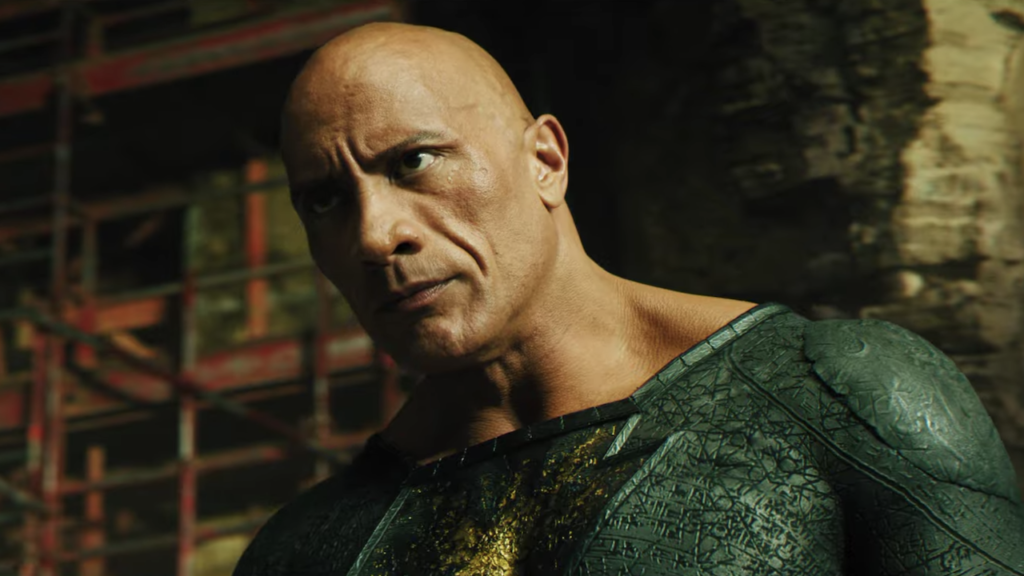
What’s that old saying?
You don’t know what you’ve got til it’s gone?
No. That’s not it.
The grass is always greener on the other side?
Maybe.
I’m trying to say something about why Black Adam didn’t do well at the box office.
There have been a lot of critiques of superhero movies as of late. They say that they all feel the same. They’re all lowest-common denominator entertainment. You’ve seen one, you’ve seen them all.
While there are definitely issues with Marvel and DC movies, sometimes it takes a superhero flick outside of that space to help you realize just how much better those movies are. While technically part of the DC universe, Black Adam is its own thing. And it’s so generic that nobody went to see it.
This has surprised no one except for the film’s creators.
How did they get it wrong?
We always say that the key to a successful idea is to make one tweak to the formula. Give us “the same but different.” If you spoke to The Rock or anyone working on this film, they would’ve proudly said that’s exactly what Black Adam did. The title character is a superhero who kills people. He’s not all good. That’s what makes him and this movie different!
For this reason, we should all be running out to theaters to watch this film because it’s a unique twist on the superhero formula.
But we aren’t.
Why?
In my newsletter (e-mail carsonreeves1@gmail.com to get on), I talked about the importance of telling the TRUTH as a screenwriter. If you lie to the reader, they’re done with you. Cause if the reader can’t trust that what you’re saying is real, why would they continue to subject themselves to more lies?
The Rock tells us, in the trailer, that he kills people. That he’s not good. But does anybody watching the trailer truly believe that? Do they believe that he’s bad? Not a chance.
First of all, if you were really bad, your movie wouldn’t be rated a safe and cozy PG-13. And, if you were really bad, you wouldn’t have cast The Rock in the lead role. Everybody knows that the Rock has an image to uphold. They all know that he’ll never do anything that bad. So we all know you’re lying to us.
Right there, you’re done. You’re done before we even got to the theater because we know you’re lying. If you were serious about what Black Adam was saying, you would’ve cast Tom Hardy, Christian Bale, Idris Elba, or Michael B. Jordan. You wouldn’t have cast the sweetest most caring guy in Hollywood who actively cultivates a family-friendly brand. You would’ve given the movie an R-rating. You would’ve given us a much darker film, which we would’ve seen in the trailer.
We all know The Rock is going to be The Rock in this film. So the only thing you could claim as different in your movie, you neutralized with the casting. Maybe this is for the better. With James Gunn taking over DC, you get the feeling that he’s going to make a lot more Suicide Squad type movies and a lot less Black Adams.
Yet another high profile piece of fiction was also shown the exit door recently. Westworld got canceled at HBO. I hear a few people complaining about this online. How could you cancel Westworld? Pretty simple. It originally had 12 million viewers an episode. Now it has 4 million.
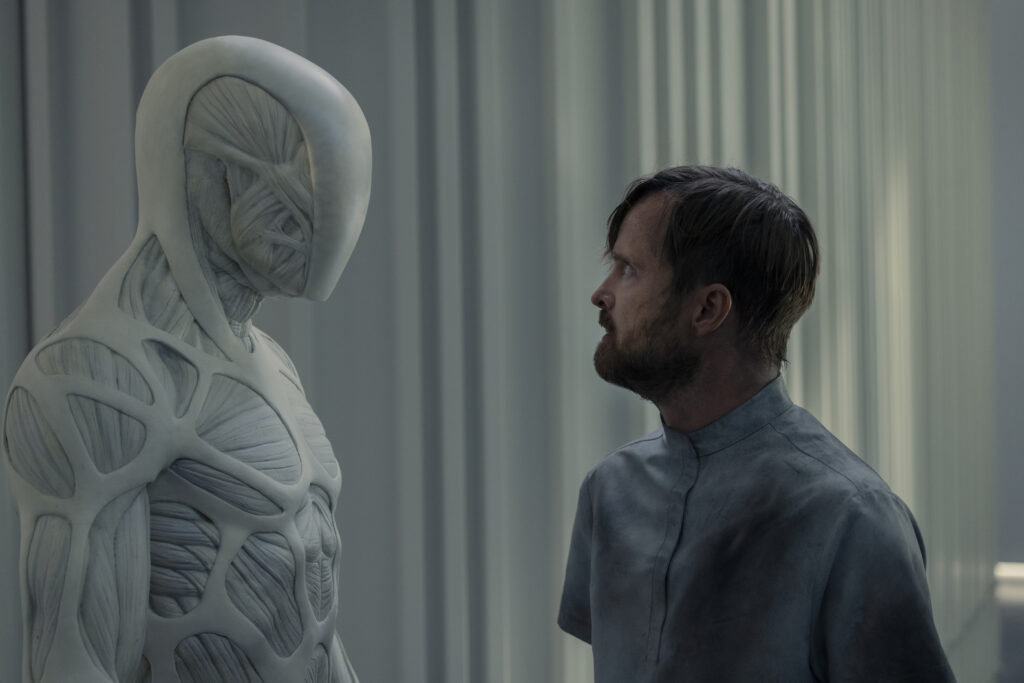
Maybe you can rationalize that drop with a White Lotus budget. But you can’t rationalize it with a Westworld budget.
Look, I’ve said this a dozen times already. You could see Westworld falling apart mid first season. You could see that they didn’t really understand their mythology. And every episode since then has shown the mythology getting sloppier and sloppier.
It’s the same deal as the Rock telling you he’s a bad guy. We know you’re lying. We know, Jonathan Nolan and Lisa Joy, that you don’t really understand this world. And I’m not saying world-building is easy to do. It’s painstaking to flesh out mythology that can support 6-8 seasons of television.
Which is why I tell writers, you gotta do the hard work and figure this stuff out ahead of time instead of putting it off. Cause readers have a sixth sense. They can feel when you’re trying to figure things out on the fly.
One of the reasons the original Star Wars trilogy was so good was because George Lucas’s first Star Wars screenplay was 200+ pages and included all three movies. It wasn’t until people kept pestering him to cut the script down that he finally focused on just the Death Star storyline and took the Emperor stuff out.
Therefore, when it was time to make a Star Wars sequel, he already knew all the mythology surrounding that sequel because he’d written it into the original script.
Naturally, we saw what happened when Lucasfilm took the opposite approach in the most recent trilogy. They tried to figure it out on the fly and that resulted in bizarre moments such as Rey being a Palpatine, Han Solo coming back as a Force ghost, and Snoke being some sort of test tube clone.
You don’t want to f**k with mythology, guys. It’s unforgiving, particularly later in your story when your world and rule-set have to be airtight. And just to reitnerate. You can’t fool the reader. If you’re shaky on some rule or some piece of your mythology, I guarantee you the reader will feel it.
Since it’s been light offerings at the movies, I’ve been looking for films to watch at home and have been frustrated with the options. I know some of you are gung-ho about Terrifier 2 but I suspect that the only terrifying that would happen if I saw that film is how terrified I would be to admit it.
By the way, looking for films to watch is impossible in 2022. Rotten Tomatoes is hit-or-miss. Sometimes I’ll use “Decider.com.” But there’s no place I can just go and they give me three great suggestions. And even after 20 minutes of intensive research, there are always movies that these supplementary sites miss. So since you don’t have any confidence that they’re giving you all the films, you stop going to them.
I mean, did you know there was a film out with Ewan McGregor and Ethan Hawke – two great actors! I didn’t. But apparently there is! And it just came out this month! There’s a movie, Causeway, starring an Oscar winner, that just came out. No one’s aware it exists. There’s a movie from the former head of Pixar, the guy who invented Toy Story no less, called “Luck.” Nobody knows about it.
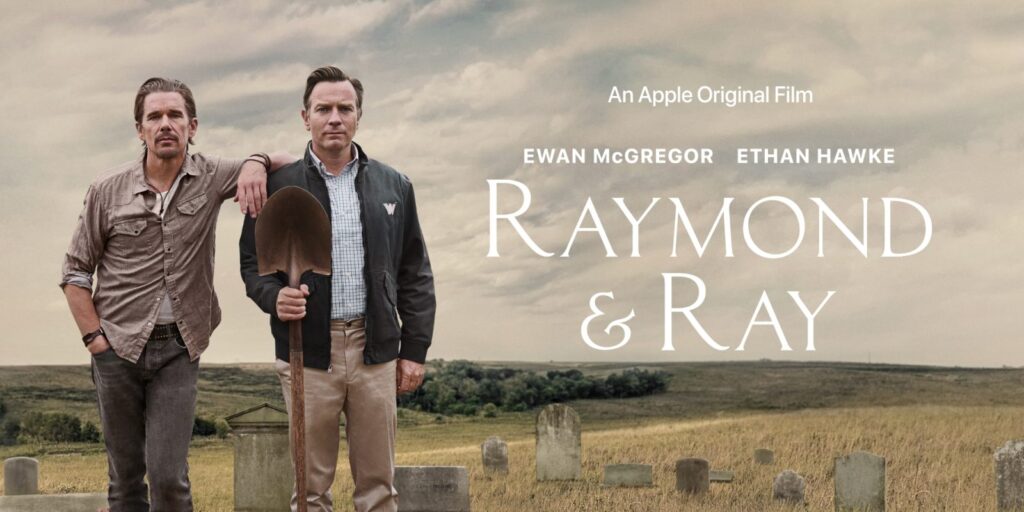
There’s a war movie called “All Quiet on the Western Front” that just came out a week ago. Nobody’s seen it! Just four years ago, every war movie that came out would get a giant marketing push. This one debuted with a whimper. Like a lot of content these days, I have no idea it’s out until it shows up on my Netflix home screen.
You have a film from a filmmaker WHO JUST WON AN OSCAR (for his movie “Green Book”) called “The Greatest Beer Run Ever.” You could take a bullhorn to the intersection of Hollywood and Highland and ask if anyone knows about the film. They’d all tell you they have no idea what you’re talking about.
Granted, some of these movies aren’t good or aren’t made for broad appeal. But you’ve got stuff like 13 Lives, which is a great movie on Amazon Prime, that is just sitting there in digital obscurity. You’d have to look for it to find it. But since no one knows it exists, you don’t even know to look for it in the first place!
This is a growing trend and something I’m worried about. I suspect that the years of 2019 to 2026 or 7 are going to be known as the Graveyard Streaming Years in Hollywood. All of this content is being made that immediately disappears. Is that not devastating?
There’s a show right now called Shantaram, which is based on a novel that sold six million copies. It’s got a legit lead actor in Charlie Hunnam. And it’s got insane production value, as it’s shot on location in Mumbai. Five years ago, this show would’ve had an insane marketing campaign. There would be so much awareness of it. Yet nobody seems interested in letting you know the show exists. Including Apple, who made it!
Lou, Blonde, Day Shift, Senior Year, Rosaline, a Fletch movie, Outer Range, Tokyo Vice, The Sandman, Maid, Black Summer. These are only recent shows or movies that have come out and that you’ve never seen because nobody’s told you they exist. They have been banished to digital purgatory. It’s more terrifying than Terrifier 2.
I almost feel like there should be an entertainment version of the SEC that makes sure that films and shows get a minimum amount of exposure so that people know they exist because it doesn’t make sense to spend 100 million on something and let it die on a below-the-fold 4th line of suggestions on your streamer’s home screen.
We shouldn’t be feeling like we’re all missing stuff just because it’s not being marketed properly. I don’t know if anybody else feels this way but I certainly do.
The good news is, we’ve got a big one next week. In fact, we’ve got tons of big movies coming our way. This is one of the best times of the year for film buffs. I’m curious how they’re going to balance emotion with entertainment in Black Panther 2. If they go too heavy on Boseman’s death, the movie might be a sad experience. I still want to have fun here. But this film is coming at just the right time. We need something big that everyone is talking about. Those releases unify the movie-going public. I’ll definitely be reviewing it Monday.
In the meantime, what the heck should I watch???
And it’s a good one!

I stumbled upon a giant SHOCKING screenwriting lie that was sold to the world back in 2017. I find a freaking new SCRIPTSHADOW TOP 25 SCRIPT! When was the last time I found one of those?? And I include a download link so you can read it yourself. I talk about the writing in House of the Dragon versus She-Hulk. Ted Lasso, Ant-Man, James Cameron, Sydney Sweeney, and the next writer of Secret Wars all make an appearance as well.
If you’re not signed up for the newsletter, e-mail me at carsonreeves1@gmail.com and I’ll send it over!
P.S. – Don’t forget to e-mail me if you want a script or logline consultation. $100 off if you mention this post!!! (carsonreeves1@gmail.com)

